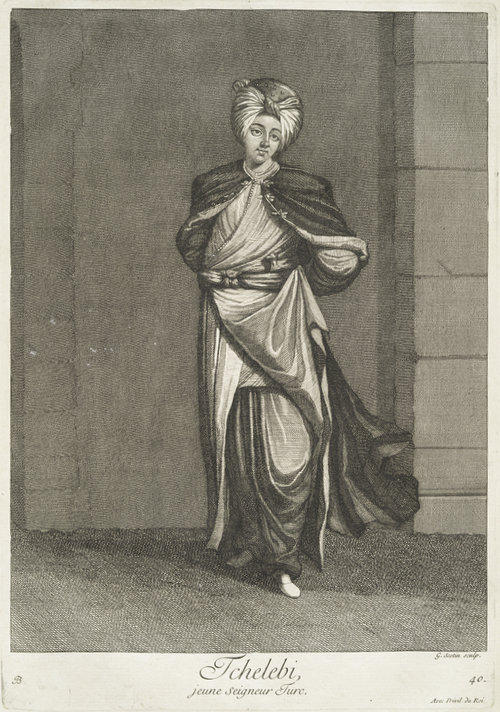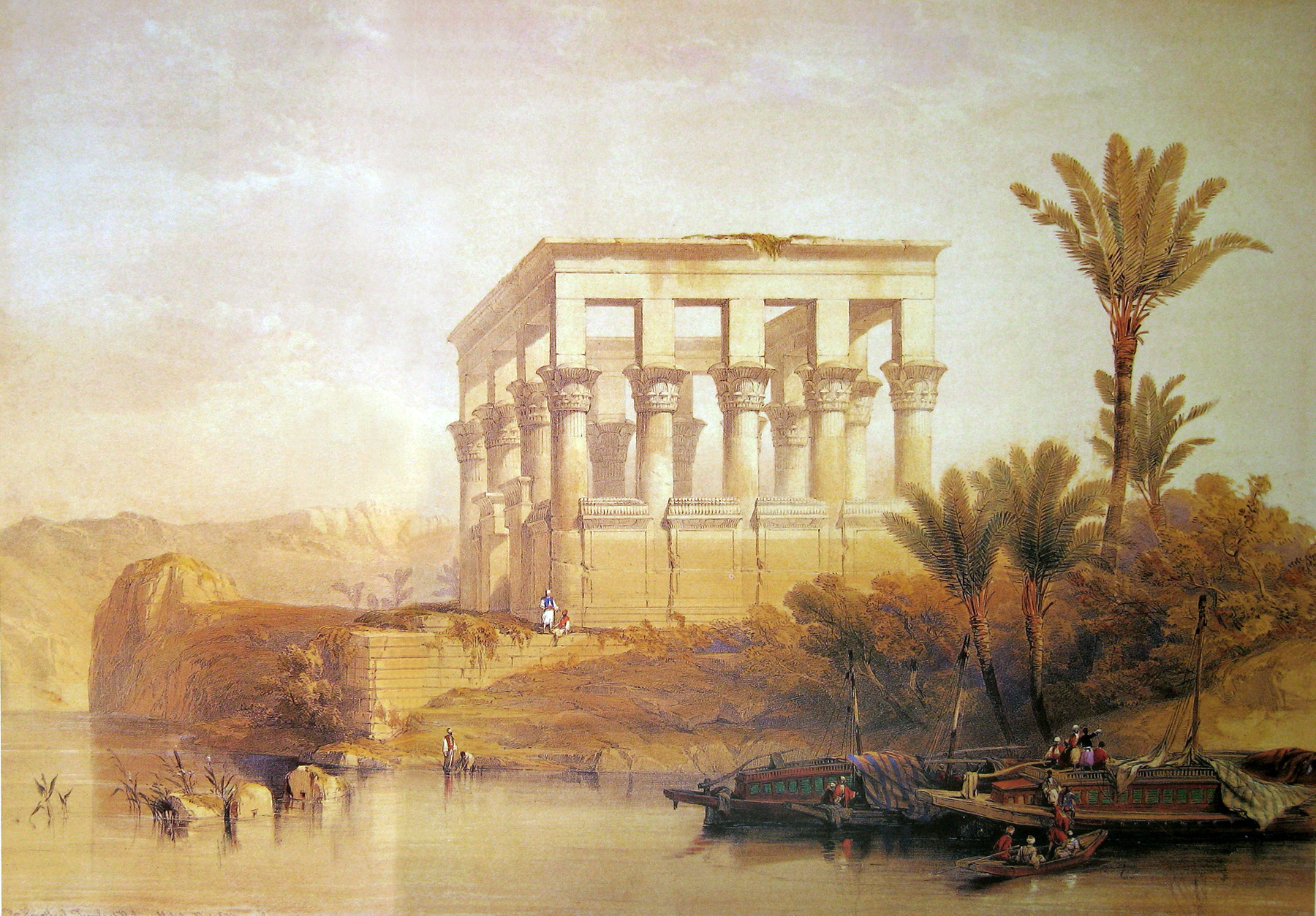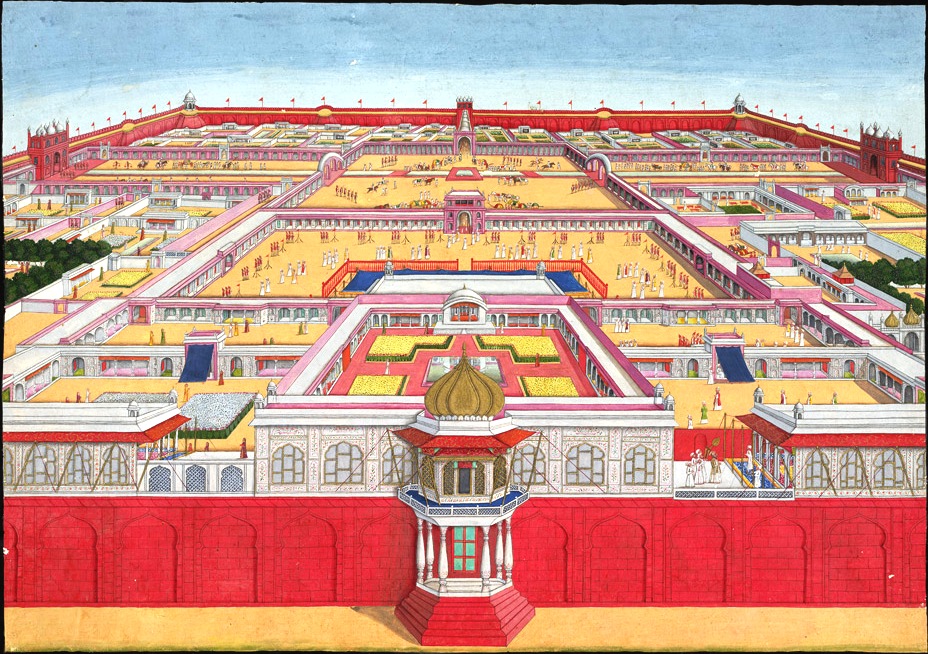|
Jean Baptiste Vanmour
Jean Baptiste Vanmour or Van Mour (9 January 1671 – 22 January 1737)Faroqhi pp443 was a Flemish- French painter, remembered for his detailed portrayal of life in the Ottoman Empire during the Tulip Era and the rule of Sultan Ahmed III. Biography Van Mour was a native of Valenciennes, a Flemish town that at the time of his birth belonged to the Spanish Netherlands, but since 1678 to France. He studied art in the studio of Jacques-Albert Gérin, and his work attracted the attention of an aristocrat and statesman of the time, Marquis Charles de Ferriol. Van Mour accompanied the De Ferriol to Constantinople after the Marquis' appointment as the French Ambassador in 1699. It was there that De Ferriol commissioned Van Mour to do one hundred oil paintings of the local people. After De Ferriol returned to France in 1711, Van Mour worked for a variety of other diplomats in the Ottoman Empire. A series of one hundred engravings were created after Van Mour's portraits, which was p ... [...More Info...] [...Related Items...] OR: [Wikipedia] [Google] [Baidu] |
Orientalism
In art history, literature and cultural studies, Orientalism is the imitation or depiction of aspects in the Eastern world. These depictions are usually done by writers, designers, and artists from the Western world. In particular, Orientalist painting, depicting more specifically the Middle East, was one of the many specialisms of 19th-century academic art, and the literature of Western countries took a similar interest in Oriental themes. Since the publication of Edward Said's ''Orientalism (book), Orientalism'' in 1978, much academic discourse has begun to use the term "Orientalism" to refer to a general patronizing Western attitude towards Middle Eastern, Asian, and North African societies. In Said's analysis, the West Essentialism, essentializes these societies as static and undeveloped—thereby fabricating a view of Oriental culture that can be studied, depicted, and reproduced in the service of Imperialism, imperial power. Implicit in this fabrication, writes Said, is the ... [...More Info...] [...Related Items...] OR: [Wikipedia] [Google] [Baidu] |
Cornelis Calkoen
Cornelis is a Dutch form of the male given name Cornelius. Some common shortened versions of Cornelis in Dutch are Cees, Cor, Corné, Corneel, Crelis, Kees, Neel and Nelis. Cornelis (Kees) and Johannes (Jan) used to be the most common given names in the Low Countries, and the origin of the term Yankees is commonly thought to derive from the term Jan-Kees for the Dutch settlers in New Netherland. Among the notable persons named Cornelis are: * Cornelis Engebrechtsz (c. 1462–1527), painter from Leiden * Cornelis Massijs (c. 1508–1556), painter from Flanders, Belgium * Cornelis Floris de Vriendt (1513/14-1575), architect and sculptor * Cornelis Cort (c. 1533–1578), engraver and draughtsman * Cornelis Corneliszoon (c. 1550–1607), inventor of the wind powered sawmill * Cor Dillen (c. 1920–2009), director of Philips and their CEO in South America * Cornelis van Haarlem (1562–1638), leading Northern Mannerist painter * Cornelis de Houtman (1565–1599), explorer who star ... [...More Info...] [...Related Items...] OR: [Wikipedia] [Google] [Baidu] |
17th-century Flemish Painters
The 17th century lasted from January 1, 1601 ( MDCI), to December 31, 1700 ( MDCC). It falls into the early modern period of Europe and in that continent (whose impact on the world was increasing) was characterized by the Baroque cultural movement, the latter part of the Spanish Golden Age, the Dutch Golden Age, the French ''Grand Siècle'' dominated by Louis XIV, the Scientific Revolution, the world's first public company and megacorporation known as the Dutch East India Company, and according to some historians, the General Crisis. From the mid-17th century, European politics were increasingly dominated by the Kingdom of France of Louis XIV, where royal power was solidified domestically in the civil war of the Fronde. The semi-feudal territorial French nobility was weakened and subjugated to the power of an absolute monarchy through the reinvention of the Palace of Versailles from a hunting lodge to a gilded prison, in which a greatly expanded royal court could be more easily ... [...More Info...] [...Related Items...] OR: [Wikipedia] [Google] [Baidu] |
Ottoman Culture
Ottomans culture evolved over several centuries as the ruling administration of the Turks absorbed, adapted and modified the various native cultures of conquered lands and their peoples. There was influence from the customs and languages of Islamic societies, while Persian culture had a significant contribution through the Seljuq Turks, the Ottomans' predecessors. Despite newer added amalgamations, the Ottoman dynasty, like their predecessors in the Sultanate of Rum and the Seljuk Empire were influenced by Persian culture, language, habits and customs. Throughout its history, the Ottoman Empire had substantial subject populations of Orthodox subjects, Armenians, Jews and Assyrians, who were allowed a certain amount of autonomy under the ''millet'' system of Ottoman government, and whose distinctive cultures were adopted and adapted by the Ottoman state. As the Ottoman Empire expanded it assimilated the culture of numerous regions under its rule and beyond, being particularly infl ... [...More Info...] [...Related Items...] OR: [Wikipedia] [Google] [Baidu] |
People From Valenciennes
A person ( : people) is a being that has certain capacities or attributes such as reason, morality, consciousness or self-consciousness, and being a part of a culturally established form of social relations such as kinship, ownership of property, or legal responsibility. The defining features of personhood and, consequently, what makes a person count as a person, differ widely among cultures and contexts. In addition to the question of personhood, of what makes a being count as a person to begin with, there are further questions about personal identity and self: both about what makes any particular person that particular person instead of another, and about what makes a person at one time the same person as they were or will be at another time despite any intervening changes. The plural form "people" is often used to refer to an entire nation or ethnic group (as in "a people"), and this was the original meaning of the word; it subsequently acquired its use as a plural form of per ... [...More Info...] [...Related Items...] OR: [Wikipedia] [Google] [Baidu] |
1737 Deaths
Events January–March * January 5 – Spain and the Holy Roman Empire sign instruments of cession at Pontremoli in the Grand Duchy of Tuscany in Italy, with the Empire receiving control of Tuscany and the Grand Duchy of Parma and Piacenza, in return for Don Carlos of Spain being recognized as King of Naples and King of Sicily. * January 9 – The Empires of Austria and Russia enter into a secret military alliance that leads to Austria's disastrous entry into the Russo-Turkish War. * January 18 – In Manila, a peace treaty is signed between Spain's Governor-General of the Philippines, Fernándo Valdés y Tamon, and the Sultan Azim ud-Din I of Sulu, recognizing Azim's authority over the islands of the Sulu Archipelago. * February 20 – France's Foreign Minister, Germain Louis Chauvelin, is dismissed by King Louis XV's Chief Minister, Cardinal André-Hercule de Fleury * February 27 – French scientists Henri-Louis Duhamel du Monceau and Geo ... [...More Info...] [...Related Items...] OR: [Wikipedia] [Google] [Baidu] |
1671 Births
Events January–March * January 1 – The Criminal Ordinance of 1670, the first attempt at a uniform code of criminal procedure in France, goes into effect after having been passed on August 26, 1670. * January 5 – The Battle of Salher is fought in India as the first major confrontation between the Maratha Empire and the Mughal Empire, with the Maratha Army of 40,000 infantry and cavalry under the command of General Prataprao Gujar defeating a larger Mughal force led by General Diler Khan. * January 17 – The ballet ''Psyché'', with music composed by Jean-Baptiste Lully, premieres before the royal court of King Louis XIV at the Théâtre des Tuileries in Paris. * January 28 – The city of Nuestra Señora de la Asunción de Panamá, founded more than 150 years earlier at the Isthmus of Panama by Spanish settlers and the first permanent European settlement on the Pacific Ocean, is destroyed by the Welsh pirate Henry Morgan. The last surviving o ... [...More Info...] [...Related Items...] OR: [Wikipedia] [Google] [Baidu] |
List Of Orientalist Artists
This is an incomplete list of artists who have produced works on Orientalist subjects, drawn from the Islamic world or other parts of Asia. Many artists listed on this page worked in many genres, and Orientalist subjects may not have formed a major part of their body of work. For example, the list includes some portrait painters based in Europe who on occasion painted sitters wearing "oriental" costume. The list also includes Orientalist photographers, engravers and lithographers. The list includes links to the English Wikipedia, and where no English article exists, named artists are linked to foreign language versions of Wikipedia, where available. Note: This listing uses Spanish naming customs, for personalities from cultural areas where they prevail : the first family name is the paternal name and the second is the maternal family name. Artists are listed alphabetically by their paternal family name. For example, the Spanish artist, Joaquín Sorolla y Bastida, is listed und ... [...More Info...] [...Related Items...] OR: [Wikipedia] [Google] [Baidu] |
Rijksmuseum
The Rijksmuseum () is the national museum of the Netherlands dedicated to Dutch arts and history and is located in Amsterdam. The museum is located at the Museum Square in the borough of Amsterdam South, close to the Van Gogh Museum, the Stedelijk Museum Amsterdam, and the Concertgebouw. The Rijksmuseum was founded in The Hague on 19 November 1798 and moved to Amsterdam in 1808, where it was first located in the Royal Palace and later in the Trippenhuis. The current main building was designed by Pierre Cuypers and first opened in 1885.The renovation Rijksmuseum. Retrieved on 4 April 2013. On 13 April 2013, after a ten-year renovation which cost 375 million, the main building was reopened by |
Batavian Republic
The Batavian Republic ( nl, Bataafse Republiek; french: République Batave) was the successor state to the Republic of the Seven United Netherlands. It was proclaimed on 19 January 1795 and ended on 5 June 1806, with the accession of Louis Bonaparte to the Dutch throne. From October 1801 onward, it was known as the Batavian Commonwealth ( nl, Bataafs Gemenebest). Both names refer to the Germanic tribe of the ''Batavi'', representing both the Dutch ancestry and their ancient quest for liberty in their nationalistic lore. In early 1795, intervention by the French Republic led to the downfall of the old Dutch Republic. The new Republic enjoyed widespread support from the Dutch populace and was the product of a genuine popular revolution. However, it was founded with the armed support of the French revolutionary forces. The Batavian Republic became a client state, the first of the " sister-republics", and later part of the French Empire of Napoleon. Its politics were deeply in ... [...More Info...] [...Related Items...] OR: [Wikipedia] [Google] [Baidu] |
Louis Bonaparte
Louis Napoléon Bonaparte (born Luigi Buonaparte; 2 September 1778 – 25 July 1846) was a younger brother of Napoleon I, Emperor of the French. He was a monarch in his own right from 1806 to 1810, ruling over the Kingdom of Holland (a French client state roughly corresponding to the current Netherlands). In that capacity he was known as Louis I (Dutch: Lodewijk I ). Louis was the fifth surviving child and fourth surviving son of Carlo Buonaparte and Letizia Ramolino, out of eight children who lived past infancy. He and his siblings were all born on Corsica, which had been conquered by France less than a decade before his birth. Louis followed his older brothers into the French Army, where he benefited from Napoleon's patronage. In 1802, he married his step-niece Hortense de Beauharnais, the daughter of Empress Joséphine (Napoleon's wife). In 1806, Napoleon established the Kingdom of Holland in place of the Batavian Republic, appointing Louis as the new king. Napoleon had i ... [...More Info...] [...Related Items...] OR: [Wikipedia] [Google] [Baidu] |
Royal Palace Of Amsterdam
The Royal Palace of Amsterdam in Amsterdam (Dutch: ''Koninklijk Paleis van Amsterdam'' or ) is one of three palaces in the Netherlands which are at the disposal of the monarch by Act of Parliament. It is situated on the west side of Dam Square in the centre of Amsterdam, opposite the War Memorial and next to the Nieuwe Kerk. The palace was built as a city hall during the Dutch Golden Age in the 17th century. The building became the royal palace of King Louis Napoleon and later of the Dutch Royal House. History Town hall The structure was built as the Town Hall of the City of Amsterdam "facing the landing wharfs along Damrak, which at that time would have been busy with ships". The town hall was opened on 29 July 1655 by Cornelis de Graeff, the mayor of Amsterdam. The main architect was Jacob van Campen, who took control of the construction project in 1648. It was built on 13,659 wooden piles. Palace After the patriot revolution which swept the House of Orange from power a de ... [...More Info...] [...Related Items...] OR: [Wikipedia] [Google] [Baidu] |




_1938.jpg)

.jpg)


